P. Marlin May 2018

Charles I, Henry VIII, Jane Seymour
Like similar anglophiles, I plan on waking up at 4am on May 19 to watch the wedding of Prince Harry and Megan Markle at St. George Chapel at Windsor Castle. Though the wedding is exciting, my true interest is in seeing the centuries old Windsor Castle and St. George's Chapel, which I visited in 2015, in all its ancient splendor.
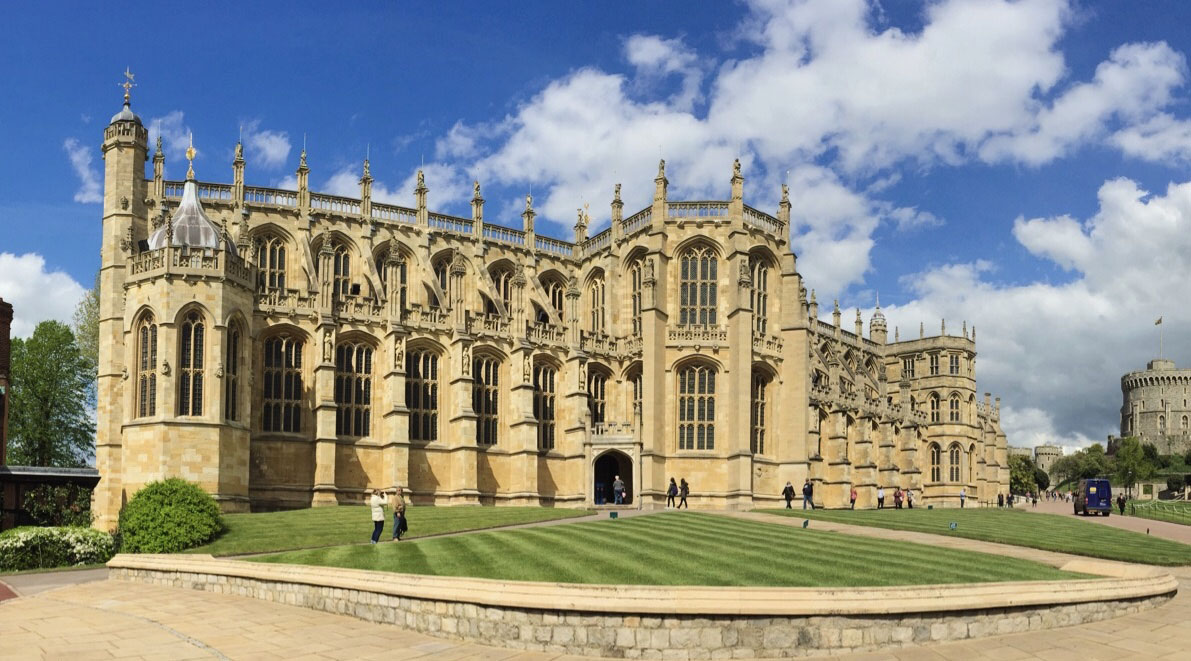
St. George's Chapel Photo: P. Marlin May 2015
St. George’s Chapel has been the final resting place for many kings and queens over the centuries. More recent burials have included Queen Elizabeth II parents, George VI and Elizabeth, and her grandparents, George V and Mary of Teck. Elizabeth II and Phillip, upon their passing, will be buried in the chapel as well.

St. George's Chapel and Windsor Castle Photo: P. Marlin May 2015
In 1813 King George III, of American Revolution fame, decided to add a “Royal Vault” under the chapel. During the excavation work for a passageway leading to the new "Royal Vault,” workmen accidentally uncovered the tomb of King Henry VIII, (died 1547, famously known for his six wives), his third and favorite wife, Jane Seymour, and Charles I (died 1649, the only king ever beheaded).

Royal Vault

A photo of King Edward VII's coffin in the Royal Vault.
Upon discovery, the royal physician, Sir Henry Halford, was asked to examine the tomb and conduct an autopsy on the body of Charles I. There had been question as to the location of the king’s remains, so the request was made to verify that it was indeed the beheaded king.
According to Halford’s account, "when the head had been entirely disengaged from the attachments which confined it, it was found to be loose, and, without any difficulty, was taken up and held to view. It was quite wet and gave a greenish red tinge to paper and to linen, which touched it. The back part of the scalp was entirely perfect, and had a remarkably fresh appearance; the pores of the skin being more distinct, as they usually are when soaked in moisture; and the tendons and ligaments of the neck were of considerable substance and firmness. The hair was thick at the back part of the head and, in appearance, nearly black. A portion of it, which has since been cleaned and dried, is of a beautiful dark brown colour. That of the beard was a redder brown. On the back part of the head, it was more than an inch in length, and had probably been cut so short for the convenience of the executioner, or perhaps by the piety of friends soon after death in order to furnish memorials of the unhappy King." Halford continues that he believes the liquid (wet) in the coffin was blood and that the head rest in blood. The full account can be read at https://bit.ly/2k7OnYb.
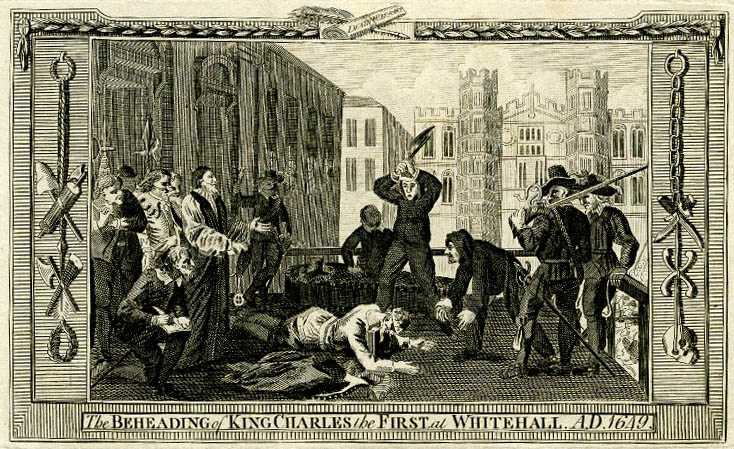
Charles I beheading at Whitehall.
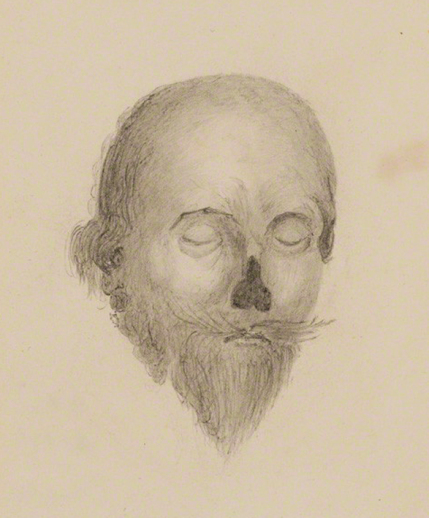
A sketch of King Charles I by Sir Henry Halford.1

An 1813 sketch of the tomb of Charles I, Henry VIII, Jane Seymour and child.
Upon examination of the tomb area, Dr. Halford noted that Henry VIII's coffin had been damaged and assumed that this had occurred as a result of the burial of Charles I. Halford speculated that the hurried lowering of Charles I coffin caused it to crash into that of his ancestor, Henry VIII (sketch of 3 coffins).
The tomb of Henry VIII, though observed, was not opened by Halford, "The larger one (coffin) was supposed on good grounds to contain the remains of King Henry VIII measured six feet ten inches in length, and had been enclosed in an elm one of two inches in thickness: but this was decayed, and lay in small fragments near it. The leaden coffin appeared to have been beaten in violence about the middle; and a considerable opening in that part of it, exposed a mere skeleton of the King. Some beard remained upon the chin, but there was nothing to discriminate the personage contained in it."
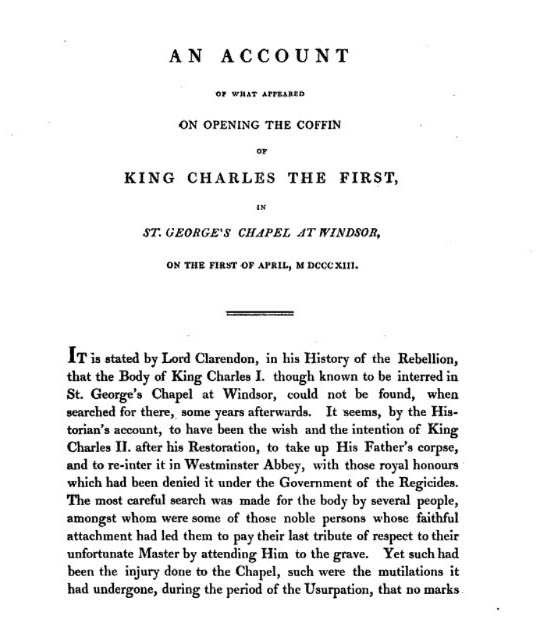
An account of the opening of the coffin of King Charles I.
As Megan Markle strides through St. George’s Quire (where the choir sings) towards Prince Harry, she will walk directly over the marble slab emblazoned with the names of Henry VIII, Jane Seymour, and Charles I, indicating these members of the royal family are interred beneath St. George's Chapel. An interesting cast of characters in one tomb, it seems appropriate that the two egotistical kings ended up buried together.

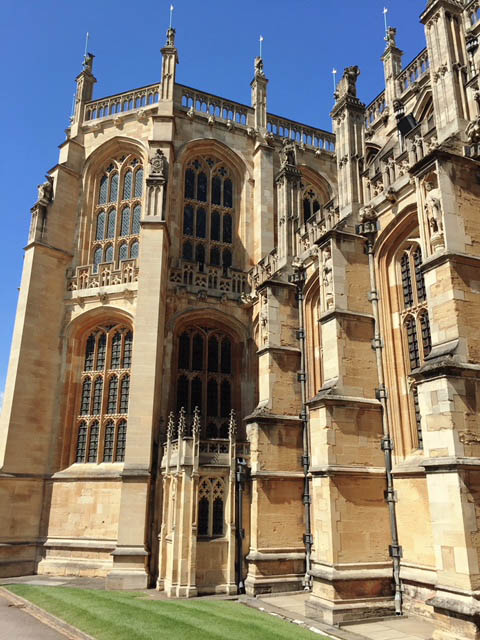 St. George's Chapel Photo: P Marlin May 2015
St. George's Chapel Photo: P Marlin May 2015
Her Majesty, Queen Elizabeth II passed away on September 8, 2022 and was buried in St. George's Chapel on September 19, 2022. The photos below are a lovely representation of the Queen then and now with similar poses, and of course, her pearls.
 The Queen as a young girl.
The Queen as a young girl.
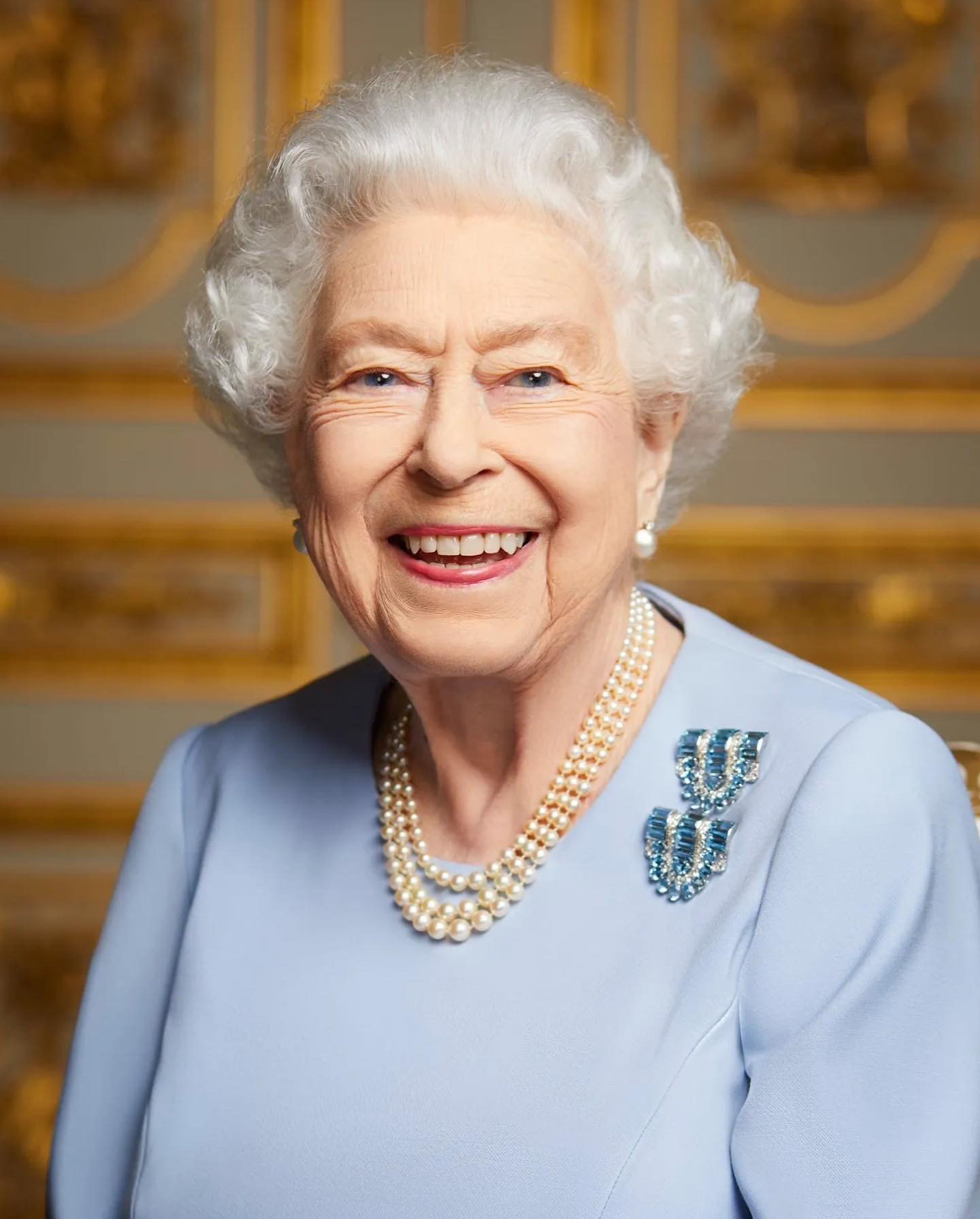 A final portrait of Queen Elizabeth II released by Buckingham Palace after her death. The photo was taken
during the Queen's Platinum Jubilee in June 2022.
A final portrait of Queen Elizabeth II released by Buckingham Palace after her death. The photo was taken
during the Queen's Platinum Jubilee in June 2022.
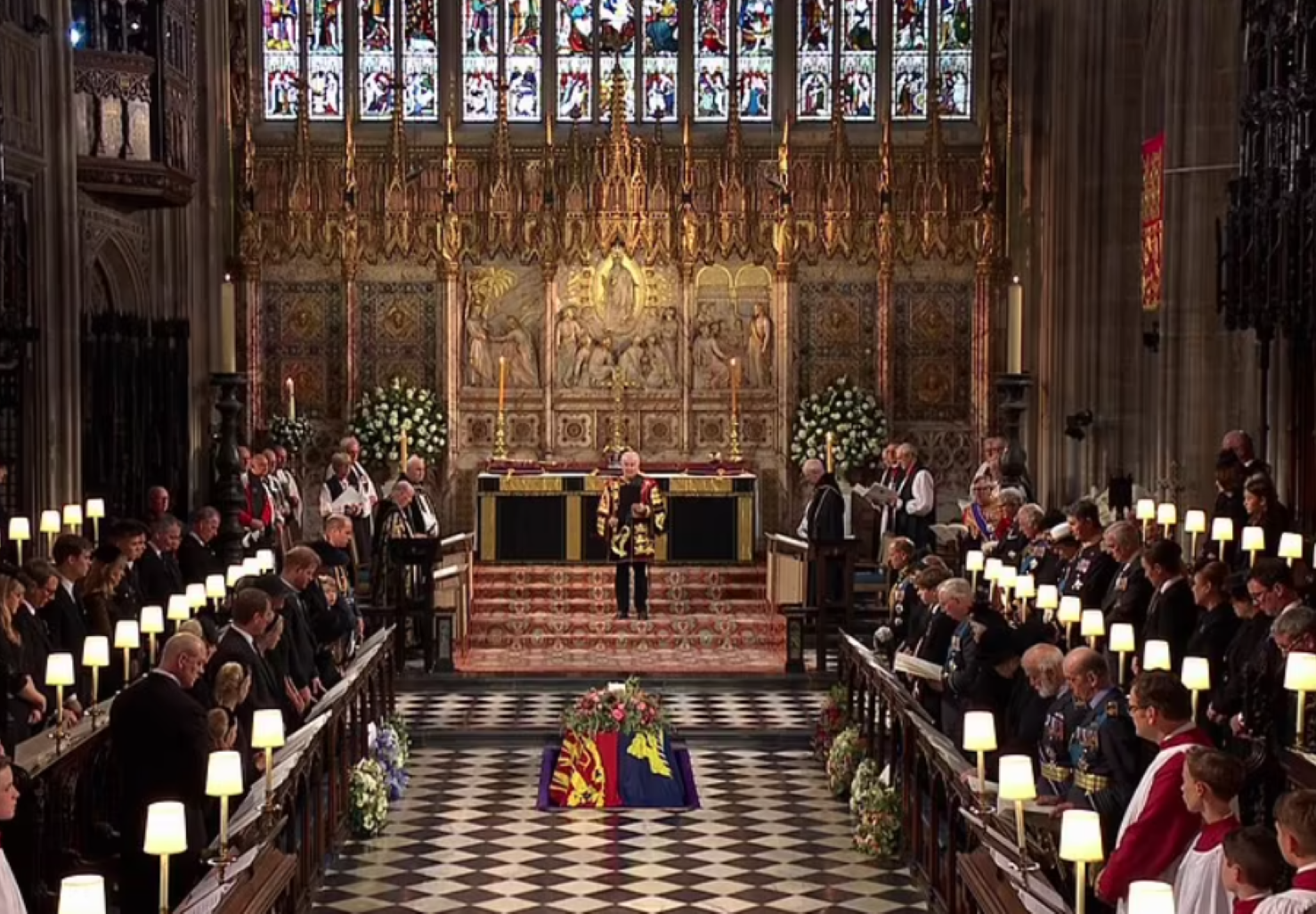 The Queen's coffin being lowered into the Royal Vault.
The Queen's coffin being lowered into the Royal Vault.
 The Queen's Final Journey into the Royal Vault as laid out in this diagram from the
Daily Mail.
The Queen's Final Journey into the Royal Vault as laid out in this diagram from the
Daily Mail.Source
1 Under St. George's Chapel